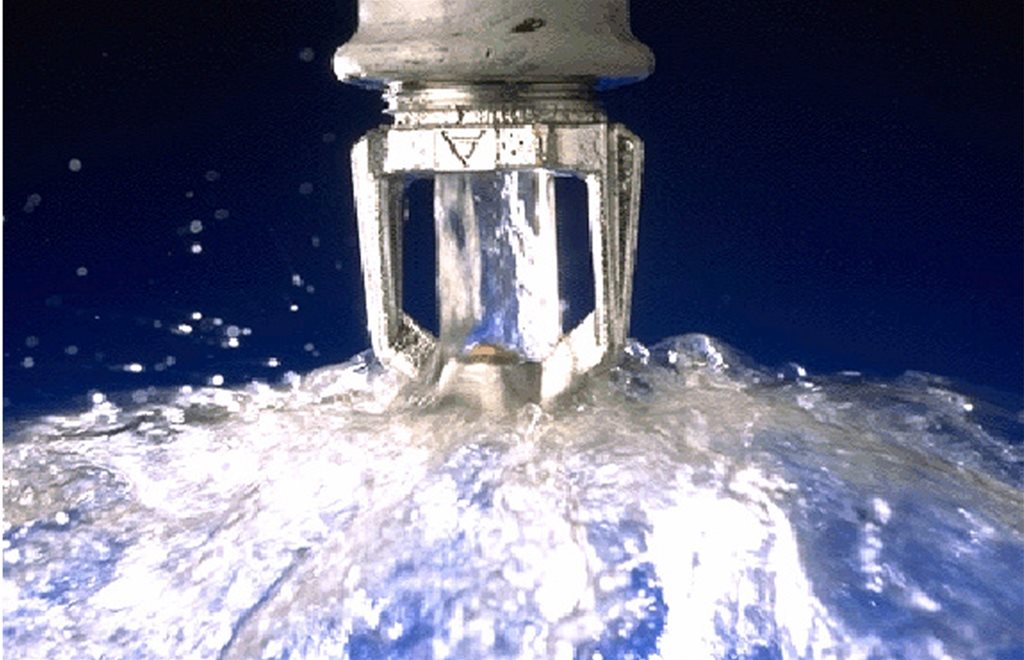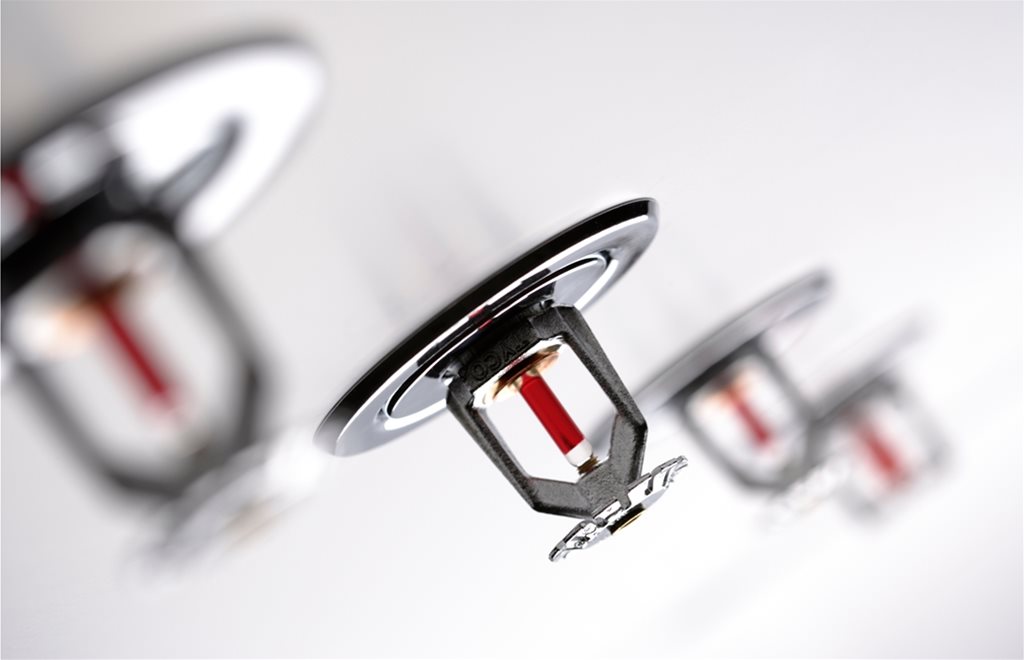Increasing demand on warehousing and on logistics further underlines the importance of fire suppression, according to Paul Berry
THE RETAIL sector knows only too well the impact of increasing consumer demand for swift and seamless purchases. With the e-commerce industry continuing to grow, the need for instant gratification drives customers now to expect products on their doorstep in a matter of hours rather than days, and this is having a major impact on the warehousing and logistics industry.
Whether apparel, white goods or groceries, there is not only more movement of goods than before, but quicker movement too. Retailers and logistics providers are now having to play catch up.
An often overlooked issue is the knock on effect of increased fire risks in warehouses. As retailers continue to prepare their operations in light of the uncertainty of Brexit, stockpiling products is becoming commonplace and is leading to even greater strain on the warehousing sector.
Consequently, the demand for safe, secure warehousing is greater than ever before. Logistics and storage providers must ensure that the safety of their staff and the security of stock are able to withstand these pressures. Solid fire suppression is crucial, and the impact of sprinkler systems in warehouses cannot be overstated. To combat the growing threat and reduce fire risks in warehouses, sprinklers are now compulsory in warehousing facilities over 2,000m2.
The British Sprinkler Alliance (BSA) has found that warehouse fires cause a loss of £230m to UK business every year, and a further annual loss of £190m in the impact on productivity and the supply chain. This makes no mention of the most important factor: the threat to lives and livelihoods.
Sprinkler technology
Sprinklers are the key piece of equipment in suppressing fires. While the fire suppression landscape has changed enormously over the years, the technology behind sprinklers has remained mostly unchanged for decades now, which is that a temperature of more than 68°C causes a bulb in the nozzle to fracture, discharging water through the sprinkler.
The quicker this happens, the better, and this hardware has been proven to achieve this by controlling or ideally extinguishing a fire as soon as possible. A fully functioning and well maintained sprinkler system should prevent fires from ever getting out of control, even in the large and complex environment of a warehouse, and the basic components do succeed in preventing further damage.
Intelligent systems are the next step forward for fire suppression in warehousing. By connecting sprinkler systems to intelligent devices throughout the building, safety teams can gain access to monitoring data off site and receive regular updates on any anomalies or alerts. This has multiple benefits: the obvious increased safety for people and assets in the warehouse, a reduced need for on site teams to physically investigate incidents and improved convenience for on duty safety personnel.
A connected sprinkler system could perform basic analysis on an activated unit, along with other safety systems, to establish whether it is or was a real fire and, if so, its severity. This is currently a hypothetical ability in most warehouse facilities, but with the Internet of Things and its associated technologies becoming more widespread across industries, it will not be long before increasingly sophisticated, connected and intelligent sprinkler systems are commonplace.
Ultimately, reducing the risk of disastrous and life threatening fires in warehouses requires an understanding of the solutions available, and access to a system provider which is able to advise as well as offer the suppression equipment that will best suit a warehouse.
In order to build the safest and most secure warehouses possible for both the goods and the workforce, contractors fitting new or existing warehouses have three main things to consider:
expertise and knowledge of the sector; the speed at which equipment can be deployed and the project completed; and the agility of the team they employ to do the job.

Expert provider
The first consideration in choosing a provider is the level of expertise and knowledge of the overall fire suppression system offering. This is an essential part of the decision process, as careful thought and planning should go into every stage of the job. Contractors should look for a company with a history of cutting edge fire suppression solutions, which will allow them to benefit from expert consultation and technical support from the very beginning.
Hiring a provider with a high level of expertise can also ensure that the project is managed in a way that meets the contractor’s needs, but also presents new opportunities which will suit the warehouse if not considered initially. Being able to work with a team who can come in at the earliest stages of development to design a unique infrastructure is key – whether from scratch, or retrofitting around existing or changing infrastructure.
There are several ways to evaluate the expertise of a provider, including finding out about their track record of delivering projects successfully and on time; their ability to design systems efficiently; and whether they consult contractors effectively from the start of a project to completion, and importantly throughout the life of the system.
If the right provider is in place, the consultation will not end when the project ends. Aftercare and ongoing service and maintenance should be built into the contract, ensuring that the contractor can benefit from the provider’s expertise long after the initial installation has been completed.

Rapid delivery
Secondly, choosing the best fire suppression provider relies on knowing who can deliver what is needed at speed. Most warehouse projects are fast tracked – as soon as a contract is signed, the retailer wants its products on the racks as quickly as possible. Having a compliant fire suppression system ready to go is one of the necessities, and without it a retailer is missing out on profits.
Generally speaking, the larger the retailer the faster they want their warehouse up and running. For example, a contractor working with an online retailer setting up around the country will need a provider who can deploy teams whenever and wherever they are needed, to ensure that projects are not stalled by a lack of resources. A large retailer needs a large company as its partner to make sure that the requirements of the warehouse can be met without limitations.
Speed and efficiency have long been pinpointed as prime considerations for projects to run seamlessly, and it is important to highlight that this can only happen with careful planning. The speed of a project should be monitored closely to ensure that the desire to complete the project on time does not override the quality of the project.
Agile and flexible
The final step is agility, which will always be a vital component in the ever changing world of logistics. This is even more pertinent in the current consumer demand driven landscape. Throughout the course of a contract, your chosen provider needs to have a collaborative and flexible approach, which ensures they can deliver consistently to the highest specification.
As projects have the potential to adapt and change from the initial planning stage, having an agile, flexible and collaborative provider will also allow the team to be able to explore all options before coming to a decisive conclusion throughout all stages of the project. This will limit the chances of meeting roadblocks that could delay the project, as all eventualities and possibilities will have been thought through already.
Alongside working with the contractor, every service provider must work alongside others – including heating, lighting, alarms, and sprinkler system providers – to ensure the completion of a whole facility. In this case agility and flexibility will be the differentiators between a collaborative provider and one that is not.
Given varying time plans, your provider should be able to accommodate and work well with other system providers without delaying the project. Equally important to agility is choosing providers who work with the most reliable supply chain partners. This way, you can rely on products being supplied on time, and guarantee the quality of every part of a system.

Meeting standards
However, agility is not the only requirement in the ability to work with other providers. Health and safety is the crux of the growing demand on retailers and therefore the warehousing industry, so it is also important to look for a provider that is able to stay abreast and on top of the latest regulatory standards. Doing so is crucial to protecting assets and lives. Only agile teams with the expertise and desire to keep up can consistently meet health and safety standards.
Project cornerstones
Fire suppression is a crucial part of the puzzle in the modern retail and logistics landscape. Expertise, agility and speed should be the cornerstones of your fire suppression project. Keeping this at the forefront of operations means the warehouse workforce will be in prime position to deal with the increased pressure of modern customer demands, while ensuring health and safety are still the focus. After all, employee safety should always be paramount.
This will give retailers the certainty they require that their stock is safe, and that business can continue quickly and efficiently while ensuring the satisfaction of both customers
and employees
Paul Berry is director of fire suppression at Johnson Controls